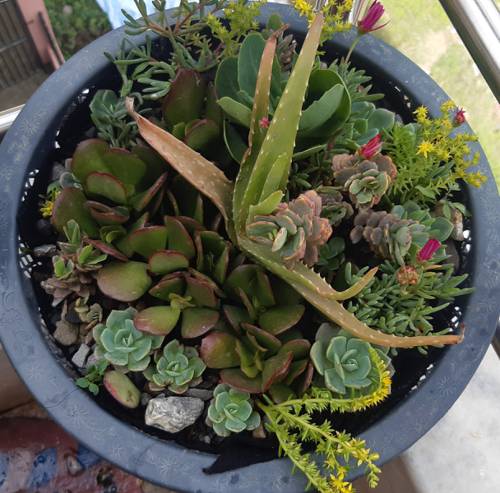
FAQ About Understanding Indoor Plant Domestication

What is plant domestication?
Plant domestication is the process through which humans select and cultivate wild plant species to meet specific needs or preferences. This often involves selecting for traits such as larger fruit size, faster growth, or increased resilience, ultimately leading to genetically distinct plants that are more suited to human environments than their wild counterparts.

How did indoor plant domestication begin?
Indoor plant domestication began centuries ago when humans started bringing plants inside their homes not just for medicinal or culinary uses, but also for aesthetic and recreational purposes. The process involved selecting plants that could thrive in low-light indoor environments and were tolerant to varying humidity and temperature levels.

Why do people domesticate plants for indoor use?
People domesticate plants for indoor use to enhance home aesthetics, improve air quality, and create a relaxing and natural indoor environment. Some plants are also domesticated for their perceived ability to reduce stress and promote well-being.

What are some examples of common indoor plants that have been domesticated?
Some common indoor plants that have been domesticated include the peace lily (Spathiphyllum spp.), pothos (Epipremnum aureum), snake plant (Sansevieria spp.), and spider plant (Chlorophytum comosum). These plants are chosen for their ability to thrive indoors, ease of care, and ornamental value.

How have indoor plants adapted to indoor environments?
Indoor plants have adapted to indoor environments through various genetic and physiological changes. These adaptations include tolerance to lower light levels, reduced water requirements, and the ability to tolerate varying temperature conditions. Some plants develop broader leaves to absorb more light, while others adjust their growth patterns to fit smaller indoor spaces.

What are the most significant traits selected during indoor plant domestication?
During indoor plant domestication, significant traits often selected include compact growth forms, tolerance to low light conditions, low maintenance requirements, and aesthetic qualities such as variegated leaves and attractive blooms.

How does domestication affect the genetic diversity of indoor plants?
Domestication can reduce the genetic diversity of indoor plants because it usually involves selecting a small number of individuals that possess desirable traits. This selective breeding can lead to a loss of genetic variation, which may make these plants more susceptible to diseases and environmental changes.

Are all indoor plants domesticated?
No, not all indoor plants are domesticated. Some plants are naturally adapted to environments similar to indoor conditions and can thrive indoors without significant human-mediated genetic modifications. However, many popular houseplants have been selectively bred to suit indoor growing conditions.

What role do hybridization and selective breeding play in indoor plant domestication?
Hybridization and selective breeding play crucial roles in indoor plant domestication by allowing breeders to combine desirable traits from different plant species or varieties. This can result in new plant varieties that are more suited to indoor environments, such as enhanced resilience, aesthetic appeal, or ease of care.

Can domesticated indoor plants survive in the wild?
Most domesticated indoor plants are unlikely to survive in the wild without human intervention as they may lack essential survival traits such as pest resistance, competitive strength against native plants, and adaptability to natural ecosystems. Their domestication focuses more on traits suitable for indoor environments than survival in the wild.

How has the popularity of indoor plants influenced their domestication?
The rising popularity of indoor plants has significantly influenced their domestication by increasing demand for varieties that are aesthetically pleasing, easy to care for, and capable of thriving in diverse indoor conditions. This demand has driven breeders to focus on these characteristics, leading to the extensive selection and cultivation of new plant varieties.

Do domesticated indoor plants require special care compared to their wild counterparts?
Domesticated indoor plants are often bred to be more resilient and easier to care for than their wild counterparts. This means they can require less specific conditions and maintenance. However, they still require proper watering, light, humidity, and occasional feeding to thrive.

What impact does indoor plant domestication have on local ecosystems?
The domestication and widespread cultivation of indoor plants can impact local ecosystems by introducing non-native species that may become invasive or by reducing the focus on conservation of native species. However, as most domesticated indoor plants are not suited to survive without care, they often do not directly affect local ecosystems.

Are there any environmental benefits to domesticating indoor plants?
Domesticating indoor plants can provide environmental benefits, such as improving indoor air quality by absorbing pollutants and increasing humidity levels in dry indoor environments. Moreover, they can contribute to reducing stress and improving mental health, which is beneficial for human environments.

How do cultural factors influence the domestication of indoor plants?
Cultural factors play a significant role in the domestication of indoor plants as different regions or societies may prioritize particular traits based on aesthetic preferences, symbolic meanings, or practical utility. For example, in some cultures, certain plants might be valued for their auspicious significance and thus selectively bred for those regions.

What challenges are faced in domesticating plants for indoor use?
Challenges in domesticating plants for indoor use include ensuring these plants can adapt to lower light levels, varying temperature and humidity conditions, and resistant to pests common in indoor environments. Additionally, there is a challenge in maintaining genetic diversity while breeding for select traits.

How do scientists study plant domestication processes?
Scientists study plant domestication through various research methods, including genetic studies, archaeological research, and observing morphological changes in plant species over time. Modern genetic tools, like DNA sequencing, allow researchers to track changes and understand how domestication has reshaped plant genomes.

What is the future of indoor plant domestication?
The future of indoor plant domestication may involve more sustainable practices, increased focus on plants that can purify air efficiently, and breeding beyond aesthetics to include positive impacts on mental health and productivity. Biotechnology may also play a role in developing novel traits more rapidly.

Can indoor plant domestication help in plant conservation?
While indoor plant domestication primarily focuses on making plants suitable for home environments, it can indirectly support plant conservation by raising awareness and interest in different plant species. Some conservation efforts use domestication to propagate and preserve plant species that are endangered or at risk in their natural habitats.

What are some common misconceptions about indoor plant domestication?
Common misconceptions about indoor plant domestication include the beliefs that all indoor plants are genetically modified or that they require the same conditions as plants in their natural habitats. In reality, many have been selectively bred for indoor environments, making them more adaptable to varied conditions.
